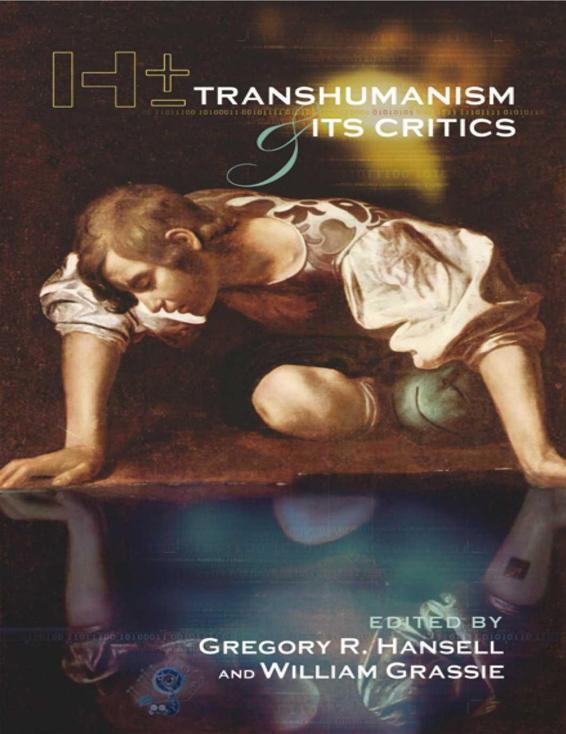H+/-: Transhumanism and Its Critics

Author:Gregory R. Hansell & William Grassie [Hansell, Gregory R. & Grassie, William]
Language: eng
Format: epub
Tags: Religion & Spirituality
Amazon: B004NBZABQ
Publisher: Xlibris
Published: 2011-02-25T00:00:00+00:00
immortality. But that is another matter, and not one I want to make central in this essay. Rather, I would like to understand more clearly
the ramifications of transhumanist assumptions regarding progress in light of the Bible’s promise of a coming future transformation.
FUTUROLOGY AND ESCHATOLOGY
The appearance of transhumanist thinking and future forecasting has been made possible by recent advances in technology nested
within a three-century tradition of belief in progress. What belief in progress has done for Western civilization is hold in front of us a
positive vision of the future. Transhumanism holds up a positive vision of the future, a variant of visions that have become quite familiar
over the last half century.
Here let us expand the context for understanding the place of transhumanist thinking within the wider horizon of Western culture
and also within Christian theology. Two key elements in the transhumanist vision I would like to analyze are these: belief that the future
will be different from the past plus the confidence that we can rely upon progress to bring this new future to pass. I would like to analyze
these two commitments within a review of just what the concept of the future entails.
Two distinctive yet complementary ways for viewing the future stand before us. The first way is to foresee the future as growth,
as an actualization of potentials residing in the present or the past. The second way is to anticipate something new, to prophesy a coming
new reality. The first can be identified with the Latin term futurum. This term suggests growth, development, maturation, or fruition. An
oak tree is the actualized futurum of a potential that already exists in the acorn. The Latin term adventus, in contrast, is the appearance
of something new, a first, so to speak. It is a future that can be expected or hoped for, but it cannot be planned for. Whereas futurum
provides an image of the future that can result from present trends, adventus provides a vision of a future that only God can make
happen. [224]
The now nearly effete era of futurology relied upon futurum. We might date the birth of futurology with the founding of the World
Future Society in 1967, although pioneering thought in the 1950s led up to it. Alvin Toffler spoke of the futurists as “a growing school of
social critics, scientists, philosophers, planners, and others who concern themselves with the alternatives facing man as the human race
collides with an onrushing future.” [225] That school of futurists who flourished before many of today’s transhumanists were born is all
but dead now, but their legacy remains instructive for us today.
The Earth Day futurists of the late 1960s and 1970s set forth projections based upon then present trends. They forecasted
alternative scenarios of damage to our planet and terrifying diebacks of starving people if trends continued toward increased population
growth, increased natural resource depletion, increased agricultural and industrial production, increased pollution, along with increased
threats to the ozone layer. They even warned us of global warming. These futurists structured their thinking according to what I call the
understanding-decision-control (udc) formula: we need to
Download
This site does not store any files on its server. We only index and link to content provided by other sites. Please contact the content providers to delete copyright contents if any and email us, we'll remove relevant links or contents immediately.
| Deconstruction | Existentialism |
| Humanism | Phenomenology |
| Pragmatism | Rationalism |
| Structuralism | Transcendentalism |
| Utilitarianism |
The remains of the day by Kazuo Ishiguro(8819)
Tools of Titans by Timothy Ferriss(8218)
Giovanni's Room by James Baldwin(7189)
The Black Swan by Nassim Nicholas Taleb(7010)
Inner Engineering: A Yogi's Guide to Joy by Sadhguru(6725)
The Way of Zen by Alan W. Watts(6505)
Asking the Right Questions: A Guide to Critical Thinking by M. Neil Browne & Stuart M. Keeley(5632)
The Power of Now: A Guide to Spiritual Enlightenment by Eckhart Tolle(5605)
The Six Wives Of Henry VIII (WOMEN IN HISTORY) by Fraser Antonia(5394)
Astrophysics for People in a Hurry by Neil DeGrasse Tyson(5130)
Housekeeping by Marilynne Robinson(4344)
12 Rules for Life by Jordan B. Peterson(4249)
Double Down (Diary of a Wimpy Kid Book 11) by Jeff Kinney(4207)
The Ethical Slut by Janet W. Hardy(4172)
Skin in the Game by Nassim Nicholas Taleb(4162)
Ikigai by Héctor García & Francesc Miralles(4125)
The Art of Happiness by The Dalai Lama(4063)
Skin in the Game: Hidden Asymmetries in Daily Life by Nassim Nicholas Taleb(3929)
Walking by Henry David Thoreau(3893)
